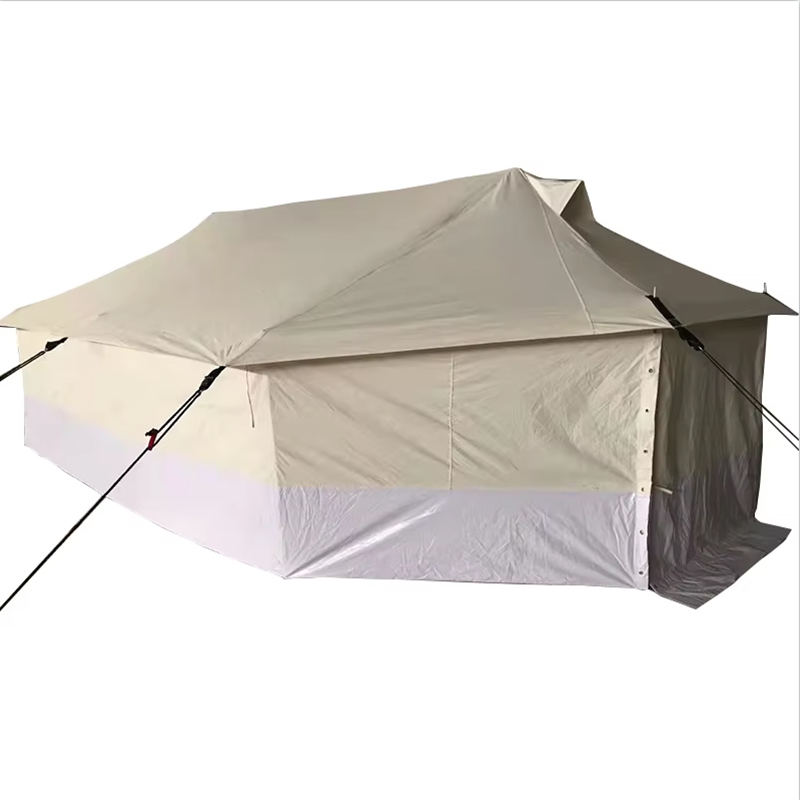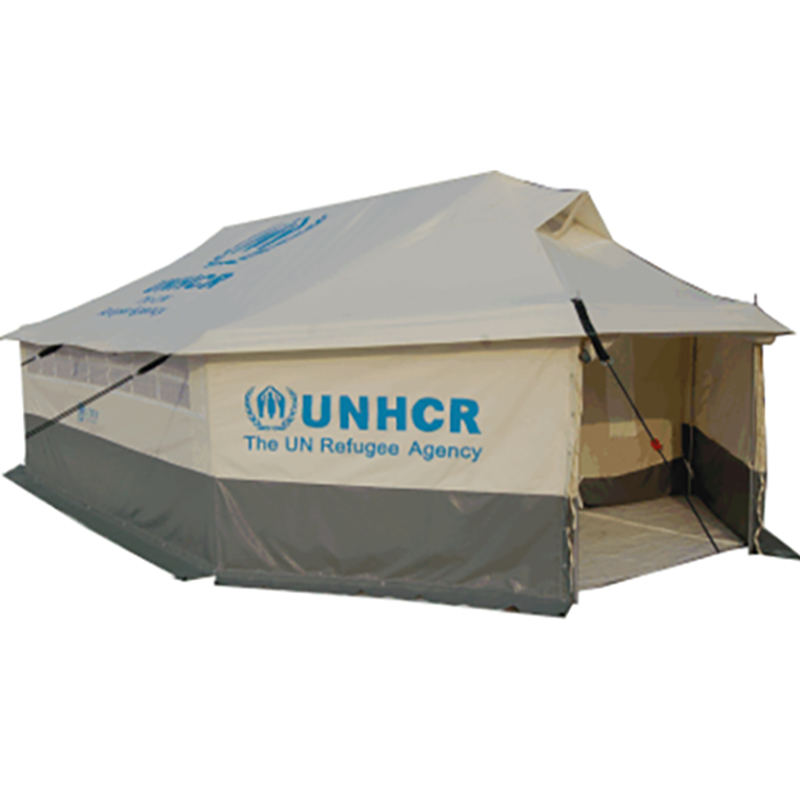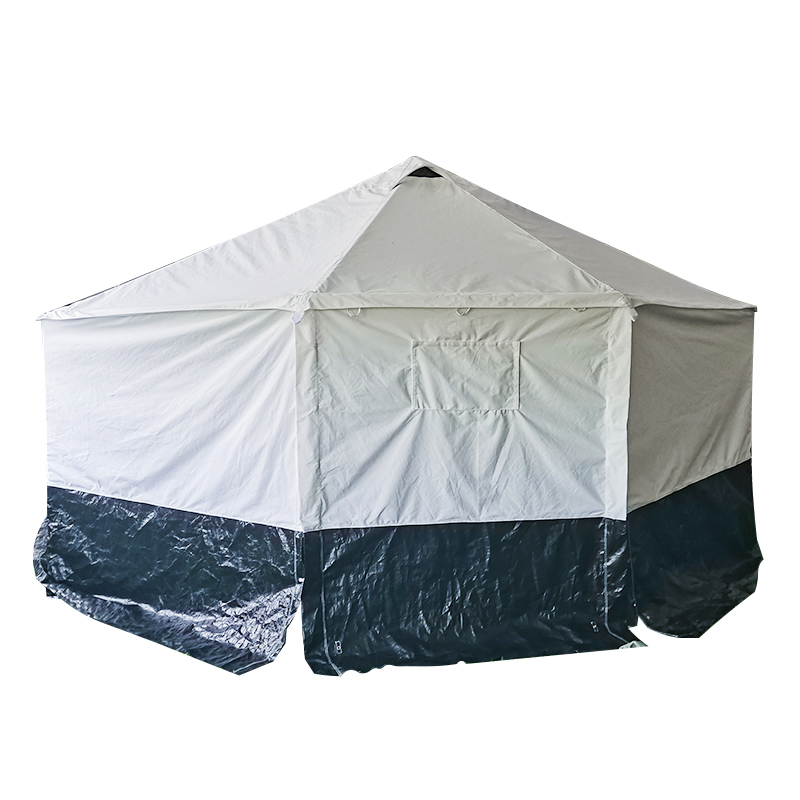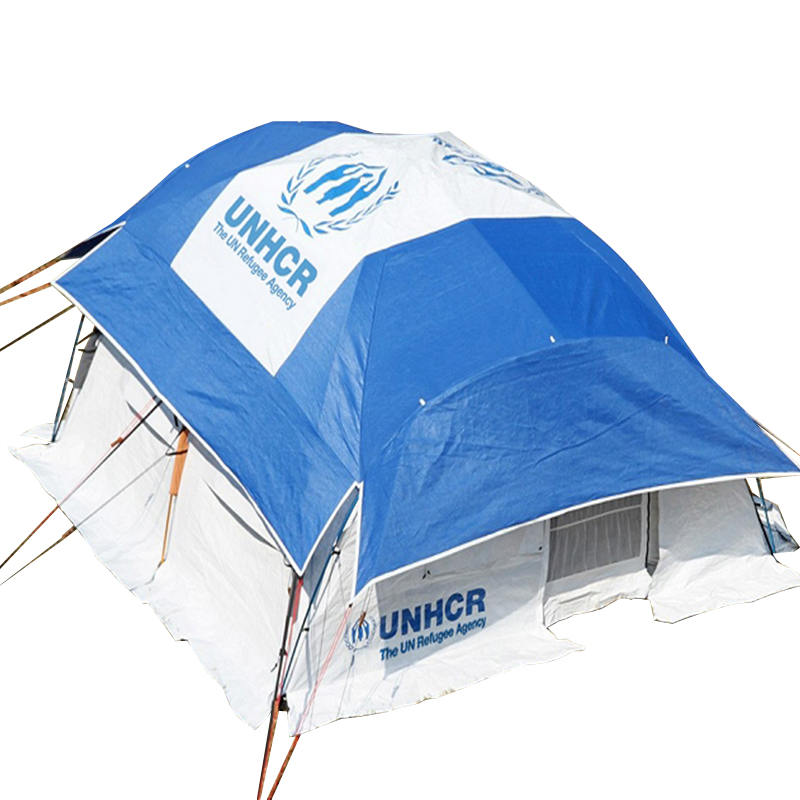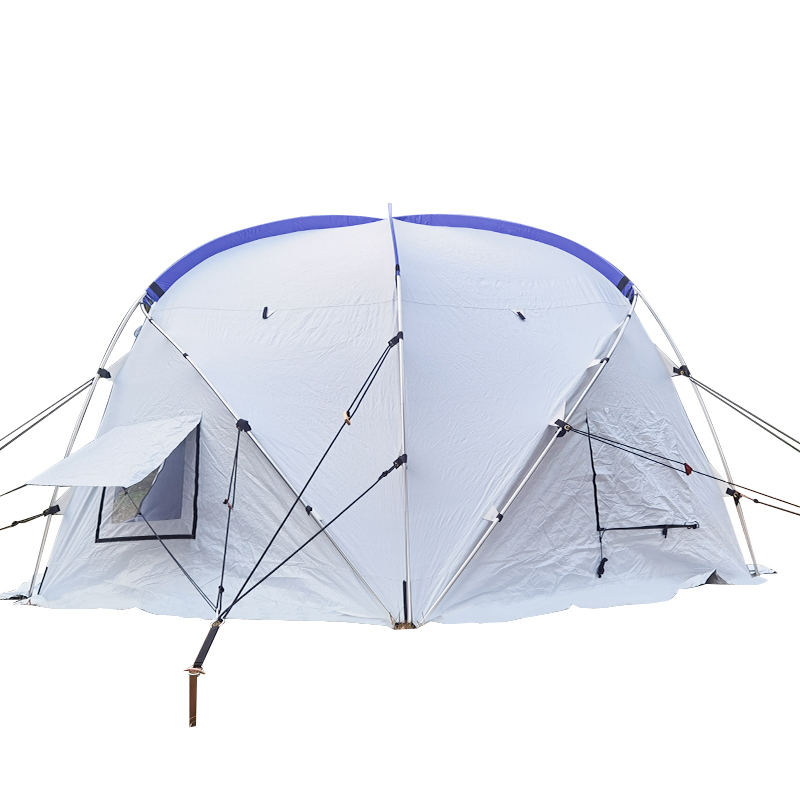Our story is about how to uphold the spirit of humanitarianism in the face of disaster, how to find solutions amidst challenges, and how to sow hope in despair.
Web Menu
Product Search
Exit Menu
How to Balance the Thermal Insulation and Portability of a Relief Tent / Emergency Tent? Are there any selection skills?
Posted by Admin | 10 Oct
Content
- 1 Why is balancing thermal insulation and portability a core challenge for Relief Tents?
- 2 What material properties determine both thermal insulation and portability?
- 3 How does tent structure affect the balance between insulation and portability?
- 4 What selection skills help prioritize needs based on usage scenarios?
- 5 How to maintain insulation performance without sacrificing portability over time?
- 6 Conclusion: Why is "scenario-based balance" the key to choosing Relief Tents?
Why is balancing thermal insulation and portability a core challenge for Relief Tents?
Relief Tents / Emergency Tents are designed for urgent scenarios—whether it’s post-disaster resettlement, outdoor rescue, or temporary shelter in remote areas—and these scenarios inherently demand two seemingly conflicting needs: thermal insulation to protect users from extreme temperatures, and portability to ensure quick deployment.
Thermal insulation typically relies on material thickness, multi-layer structures, or thermal-reflective components. For example, a tent with a thickened inner liner or a heat-retaining layer may maintain an internal temperature 5-8°C higher than the outside in cold weather, but these additions directly increase weight and volume . Portability, by contrast, requires tents to be lightweight (often under 10kg for single-person models, 15-25kg for 4-6-person rescue tents) and compressible enough to fit in backpacks or rescue vehicles .
The conflict becomes more acute in extreme environments. In high-altitude rescue missions, a tent needs to resist freezing winds (requiring strong insulation) but must also be light enough for rescuers to carry on foot for hours. In flood-hit areas, tents need to be quickly transported by boat or helicopter—bulky, heavy insulated tents can delay deployment, putting survivors at greater risk. This "insulation-portability paradox" is why balancing the two is not just a design issue, but a life-saving priority for emergency shelters.
What material properties determine both thermal insulation and portability?
The key to balancing insulation and portability lies in choosing materials that maximize heat retention while minimizing weight and bulk—and understanding three critical material properties is essential for this.
First is thermal resistance (R-value), a standard measure of insulation performance. A higher R-value means better heat retention: a tent with an R-value of 3 can effectively insulate against mild cold (around 0°C), while an R-value of 5 or higher is needed for sub-zero temperatures . However, traditional materials like thick cotton canvas have high R-values but are heavy (a 4-person canvas tent can weigh over 30kg). Modern alternatives like hollow-fiber synthetic insulation or aerogel composites offer similar R-values at 1/3 the weight—for example, an aerogel-lined tent layer with an R-value of 4 may weigh only 200-300g per square meter.
Second is material density and compressibility. Lightweight fabrics like ripstop nylon or polyester are ideal: they are thin (often 20-30 denier) but tear-resistant, and can be compressed to 1/5 of their original volume. For example, a 4-person tent made of 20D ripstop nylon with a synthetic insulation layer may weigh 12-15kg and fit into a 50L storage bag—far more portable than canvas equivalents .
Third is multi-functionality. Some materials combine insulation with other properties to avoid adding extra layers. Thermal-reflective films (e.g., aluminum-coated polyester) reflect 80-90% of body heat back into the tent, eliminating the need for thick insulation layers. These films add only 50-100g per square meter to the tent’s weight, making them a game-changer for balancing the two needs.
How does tent structure affect the balance between insulation and portability?
Beyond materials, tent structure plays a crucial role in optimizing both insulation and portability—it determines how efficiently heat is retained and how easily the tent can be folded and transported.
One key structural design is layer integration. Instead of using separate inner (insulated) and outer (weatherproof) layers (which add weight and complexity), some emergency tents use a "2-in-1 integrated layer"—a single fabric with a weather-resistant outer coating and an insulated inner lining. This design reduces weight by 15-20% compared to separate layers while maintaining the same R-value . For example, a 2-in-1 tent may weigh 10kg instead of 12kg for a 4-person model, without sacrificing insulation.
Another critical structure is space optimization. A compact, low-profile tent (with a ceiling height of 1.2-1.5m for emergency use) traps heat more effectively than a tall, spacious one—hot air rises, so a lower ceiling keeps warmth closer to users, reducing the need for thicker insulation. Additionally, tents with minimal seams reduce heat loss (seams are common weak points for insulation) and are easier to fold, as fewer seams mean less bulk when compressed.
Support structures also matter. Traditional pole tents require heavy metal poles, but modern emergency tents use lightweight, collapsible fiberglass or carbon fiber poles (a 4-person tent’s pole set may weigh only 1.5-2kg). Some even use inflatable poles—these weigh less than 1kg and can be deflated to fit into small bags, further enhancing portability without compromising the tent’s ability to hold up an insulated layer.
What selection skills help prioritize needs based on usage scenarios?
Balancing insulation and portability is not a "one-size-fits-all" task—selection should be guided by the specific emergency scenario. Here are practical skills to match the tent to your needs:
-
Prioritize portability for rapid-deployment scenarios. For search-and-rescue missions where teams hike or carry tents over long distances, or for helicopter airlifts to remote areas, choose tents under 15kg (for 4 people) with a compressible size under 60L. Opt for thermal-reflective layers (instead of thick insulation) to keep R-values adequate (around 3) while minimizing weight. For example, a 2-person rescue tent with a reflective inner layer may weigh 6-8kg and fit into a 30L backpack, ideal for quick deployment.
-
Prioritize insulation for long-term shelter scenarios. In post-disaster resettlement (where tents are used for weeks or months) or cold-climate missions (temperatures below -5°C), prioritize R-values of 4 or higher. Choose tents with multi-layer insulation (e.g., hollow-fiber inner lining + thermal film) but look for lightweight insulation materials to keep total weight under 25kg (for 6 people). For example, a 6-person long-term relief tent with a 2-layer synthetic insulation may weigh 20-22kg—portable enough for vehicle transport (the primary mode for resettlement) while providing sufficient warmth.
-
Check "weight-to-R-value ratio" for objective comparison. To avoid choosing a tent that is either too heavy (for its insulation) or too poorly insulated (for its weight), calculate the ratio of total tent weight (in kg) to R-value. A ratio of 3-4kg per R-value is ideal—for example, a 12kg tent with an R-value of 4 has a ratio of 3kg/R, balancing both needs. A ratio higher than 5kg/R (e.g., a 15kg tent with an R-value of 3) means the tent is too heavy for its insulation, while a ratio lower than 2kg/R (e.g., an 8kg tent with an R-value of 5) may indicate compromised durability (common in ultra-light but fragile models).
How to maintain insulation performance without sacrificing portability over time?
Even the best-balanced Relief Tent can lose its insulation or portability over time if not maintained properly. Here are key maintenance tips to preserve both:
-
Clean insulation layers gently. Dirt, debris, or moisture trapped in insulation (e.g., synthetic fibers) reduces heat retention. After use, wipe the inner insulation layer with a damp cloth (avoid soaking) and air-dry it completely before folding—never store a damp tent, as mold will grow and break down insulation materials. For thermal-reflective films, avoid scrubbing (which can scratch the reflective coating); use a soft brush to remove dust.
-
Repair small tears immediately. A tiny tear in the tent fabric or insulation layer can lead to significant heat loss. Keep a portable repair kit (with adhesive patches designed for tent fabrics) on hand—repairing a 2cm tear takes 5 minutes and prevents the tear from expanding, which would require heavier replacement materials later.
-
Fold correctly to avoid material fatigue. Folding the tent along the same seams every time can crease and weaken insulation layers, reducing their effectiveness. Follow the manufacturer’s folding guide (or mark fold lines with tape) to distribute stress evenly. For example, fold the tent into thirds along its length, then roll it (instead of folding it flat) to minimize creases in insulation layers—rolling also keeps the tent more compact for storage.
Conclusion: Why is "scenario-based balance" the key to choosing Relief Tents?
Balancing thermal insulation and portability of Relief Tents / Emergency Tents is not about finding a "perfect middle ground"—it’s about aligning the tent’s design with the specific needs of the emergency scenario. A tent that works for a 2-hour mountain rescue (lightweight, moderately insulated) will fail in a month-long winter resettlement (needing heavy insulation), and vice versa.
By focusing on material properties (R-value, compressibility), structural design (integrated layers, compact space), and scenario-based prioritization (rapid deployment vs. long-term shelter), you can select a tent that protects users from the elements while remaining easy to transport. Remember: in emergencies, the best tent is not the one with the highest insulation or the lowest weight—it’s the one that delivers the right combination of both for the situation at hand.
Related Products
- Cell Phone:+86 15695147631
- Cell Phone:+86 18630605111
-
Email:
[email protected]
[email protected]
[email protected] - Add:No.9 Kangmin Road, Automobile industry Park, Yizheng City, Jiangsu Province, China
Copyright © Yangzhou Mailenda Outdoor Products Co., Ltd.
All Rights Reserved.
Custom Tent OEM/ODM Manufacturers

- Privacy Statement
- Terms & Conditions
- Sitemap


 English
English 中文简体
中文简体 Español
Español 日本語
日本語 русский
русский عربى
عربى